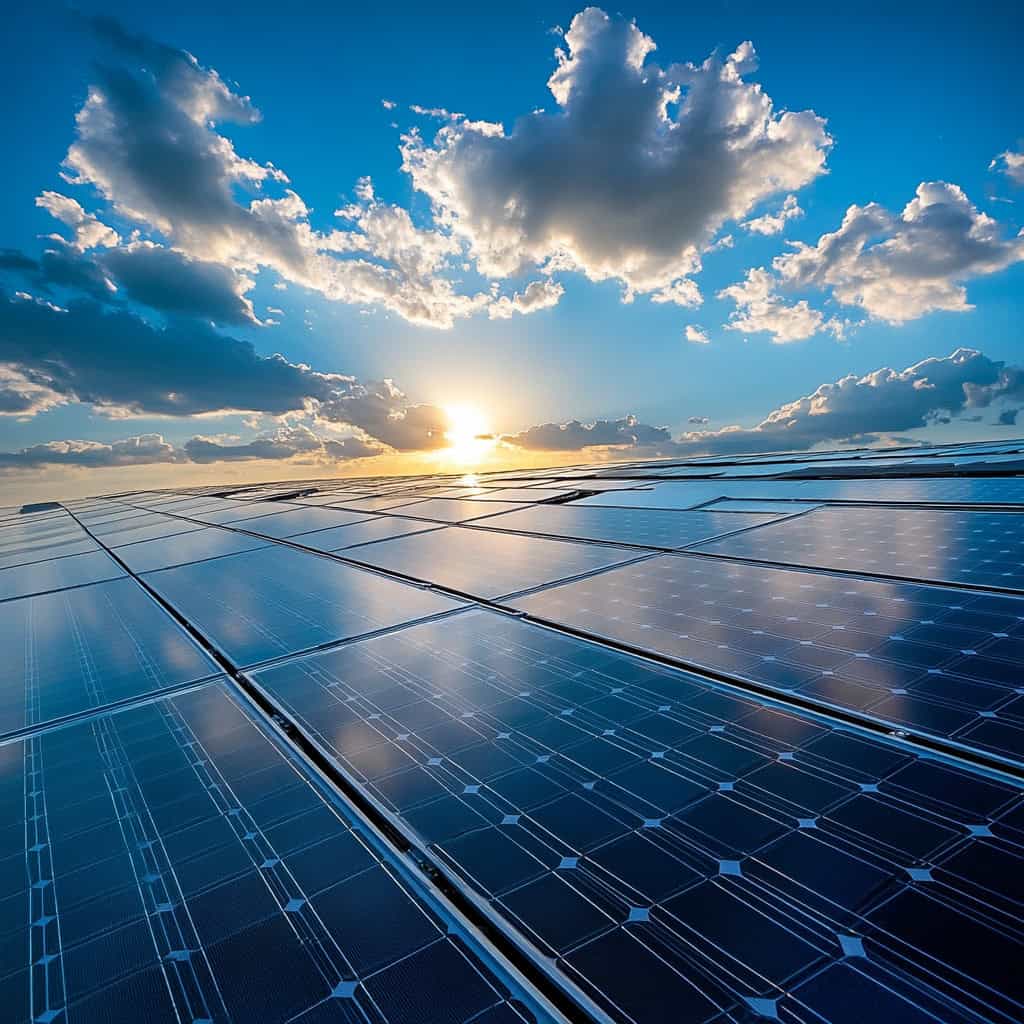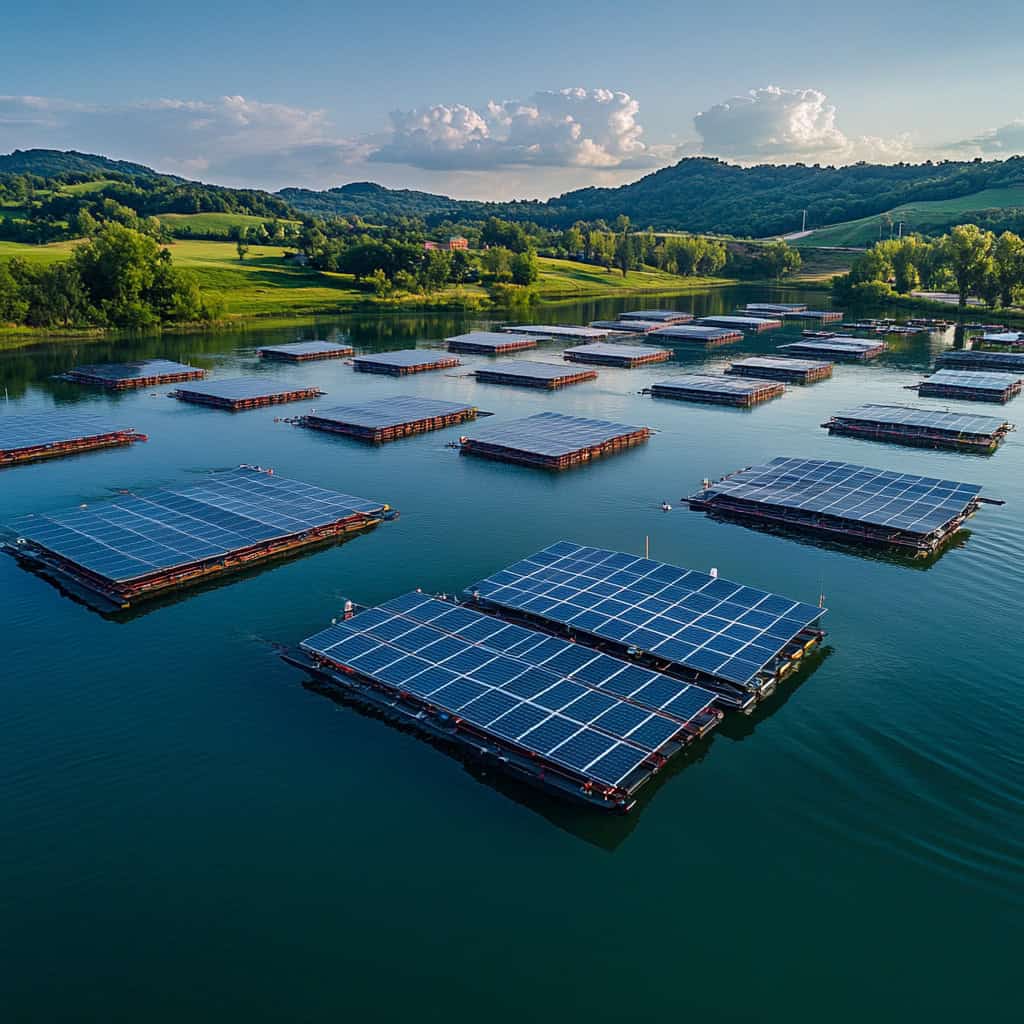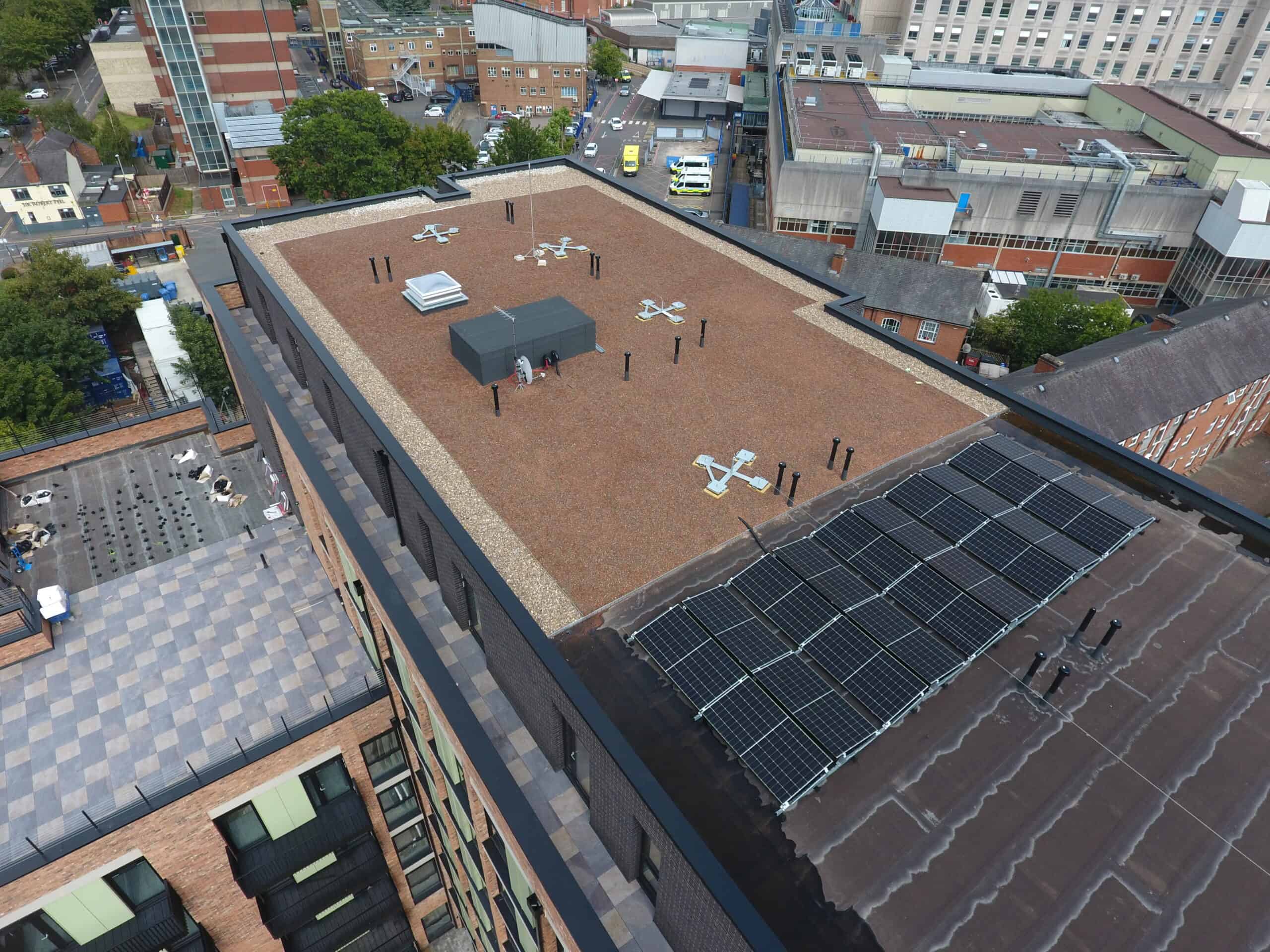As we all continue to take steps towards cleaner, more sustainable energy sources, solar technology which continues to develop, finding new spaces in the renewable energy sector: floating solar farms.
By harnessing the sun’s power over bodies of water such as lakes, reservoirs, and even oceans, floating solar farms offer a groundbreaking solution to land scarcity, a significant barrier in the expansion of solar energy.
These innovative systems not only allow for greater solar energy capacity but also come with a range of environmental and economic benefits. As global energy demands rise and the push for cleaner sources intensifies, floating solar farms are poised to play a key role in the renewable energy revolution.
A Solution To Land Scarcity
One of the major challenges facing traditional solar energy installations is the availability of land. Large solar farms require vast expanses of land, which is often in short supply, particularly in densely populated or agriculturally valuable regions.
In contrast, floating solar farms offer a solution by utilising bodies of water to generate electricity. By installing solar panels on the surface of lakes, reservoirs, and even coastal areas, this technology bypasses the need for large tracts of land.
In areas where space is at a premium, floating solar farms are an ideal solution. These systems can be deployed in underused areas such as water treatment facilities or reservoirs, offering a way to generate clean energy without taking up valuable land or potentially having a negative effect on the biodiversity.
This is particularly important in countries with rapidly growing populations and urban areas where land for traditional solar farms may be increasingly difficult to acquire. Countries like Japan and Singapore are heavily investing in floating solar farms because of this.

Boosting Solar Capacity
Floating solar farms are not only a solution to land with limited availability, but they also represent a significant opportunity to increase the overall capacity of solar power. Unlike land-based installations, which are limited by the availability of flat, suitable land, floating solar farms can be deployed on bodies of water that are otherwise unused or inaccessible.
This expansion potential is significant, as the space over water bodies such as reservoirs can be vast. The technology has already been deployed successfully in countries where large-scale floating solar farms have been installed on reservoirs, increasing the overall solar energy output without encroaching on critical land resources.
In fact, floating solar farms can provide an energy boost by tapping into water bodies in both rural and urban areas, where traditional solar installations may not be feasible.
Environmental Benefits
Beyond expanding solar energy capacity, floating solar farms also offer several environmental advantages. One of the most notable benefits is their ability to reduce water evaporation.
When installed on reservoirs, floating solar panels provide a protective layer over the water, reducing evaporation rates and conserving water, an especially valuable benefit in regions facing droughts or water scarcity.
Additionally, floating solar farms can help improve water quality. By blocking sunlight from directly hitting the water, the solar panels can reduce the growth of algae and other aquatic plants that thrive in sunlit conditions, helping maintain better water quality.
Furthermore, floating solar farms tend to have a lower environmental footprint compared to land-based solar farms. They don’t require deforestation or the clearing of land, preserving natural habitats and biodiversity. Instead of disrupting ecosystems, floating solar farms complement the natural environment by making use of unused water spaces.

Economic Viability
While floating solar farms are a relatively new technology, they are proving to be an economically viable option for many countries. While up front installation cost may be slightly higher the cost of generating energy is comparable to traditional solar farms.
Land acquisition and preparation for traditional solar farms can be expensive, especially in densely populated areas or regions with high land prices. Floating solar farms, on the other hand, often come with lower land-related expenses, as they utilise existing bodies of water.
In addition to being cost-effective in installation, floating solar farms also benefit from potentially lower maintenance costs. The cooling effect of water helps keep the solar panels at lower temperatures, which can improve their efficiency and prolong their lifespan. This makes them an attractive option for both developed and developing countries looking to expand their renewable energy infrastructure.
Challenges & Considerations
Despite their potential, floating solar farms are not without their challenges. Weather-related issues such as strong winds, storms, and extreme temperatures can affect the stability and efficiency of floating solar panels. Maintenance can also be more complicated, as these systems are located in aquatic environments where accessibility can be limited.
Don’t forget that the technology is still evolving, and ongoing research is needed to improve the materials used in the panels, optimise their efficiency, and ensure the long-term durability of these floating systems. Innovations in energy storage, grid integration, and remote monitoring will also be crucial to overcoming some of the operational hurdles associated with floating solar farms.
The Future Of Energy Expansion
As the global demand for clean and renewable energy grows, floating solar farms will become an increasingly important tool in the quest for a more sustainable, energy-efficient future.
By offering a way to expand solar power generation without requiring large amounts of land, these systems provide a promising solution to one of the biggest barriers in renewable energy development.
Their environmental and economic advantages, coupled with their potential for growth, make them a vital component of the future energy mix.
Floating solar farms have the potential to help meet the world’s energy demands while mitigating the impacts of climate change. As the technology continues to evolve and expand, it may play a central role in powering our transition to a cleaner, greener, and more sustainable future.
Contact us today at 01455 552 511 to learn how you can be part of the next wave of energy innovation, get involved and make a difference with floating solar solutions.

